By Rick VanSickle
I get it. You walk into wine shop, and you want a nice, dry Niagara Riesling. You’re staring at row after row of bottles on the shelf and decide to roll the dice.
You get home, pop it in the fridge and open it an hour later only to discover that the sweetness level is off the charts, or conversely, it’s bracingly dry. Even though you knew the odds were stacked against you, it’s likely you’ve been done this road before. Eventually your patience will wear thin. This is the same story I hear over and over; you just don’t know what you are getting with Riesling.
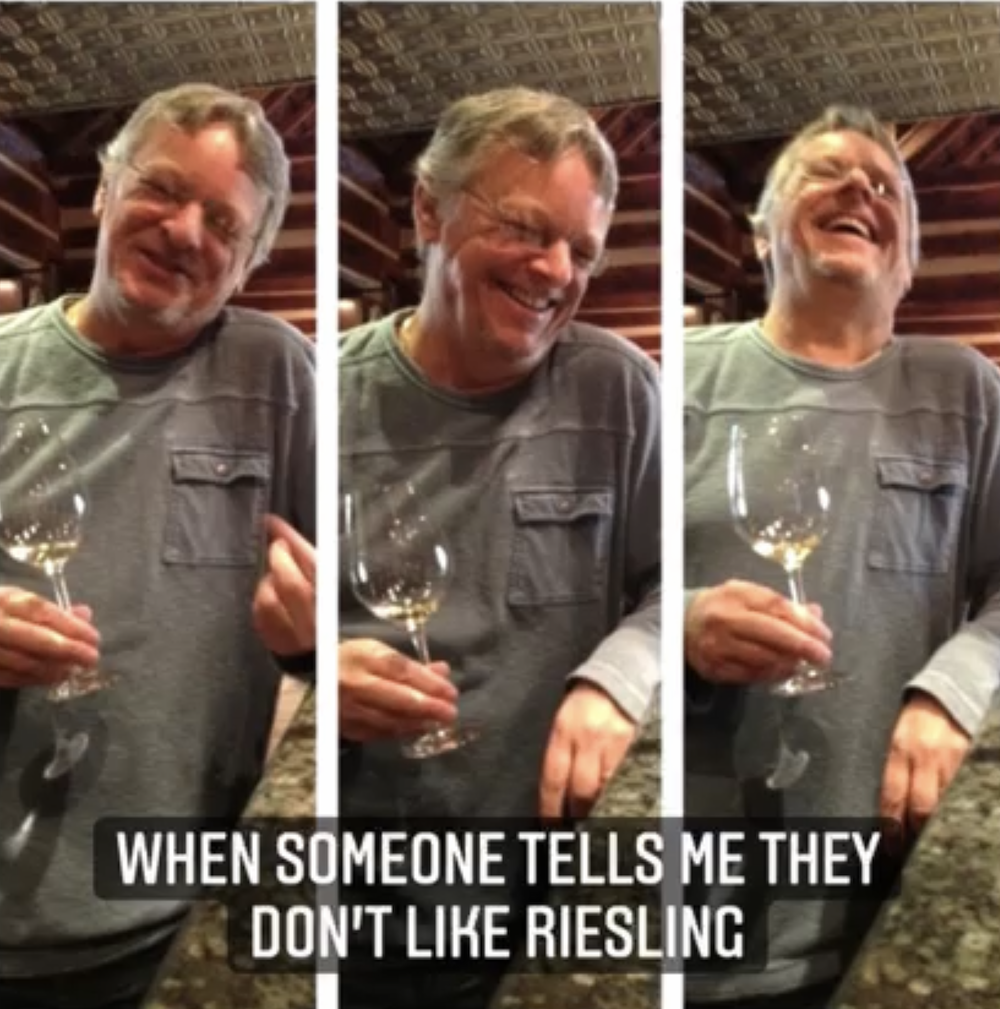
I vowed in a previous post on Wines in Niagara to do my part in putting Ontario Riesling in the spotlight, to help make Riesling great again, not that it isn’t already. This misunderstood grape is worth fighting for, in my opinion, and I choose to believe that many of you feel the same way.
There were various comments on social media when I last posted about Riesling, most focused on perceived sweetness and how confusing it can be for consumers. Tristan Bondett, the vineyard manager at Malivoire Wine Company, had this to say:
“Can it be a consumer sugar perception/ratio thing? Can Niagara agree on a scale on the back label? Is more information helpful? Either like the International Riesling Foundation scale based on (the) ratio of RS (residual sugar) and TA (titratable acidity) or the newly implemented, pretty damn simple, addition to Alsace labels based on absolute RS? Conversation is always a better option than the alternative of just ripping out huge swaths of mature, alive vineyards and randomly trying to predict what the consumer will want! That is not helping Niagara’s lack of focus, if we keep trying to re-brand what is being done well here,” he passionately wrote.
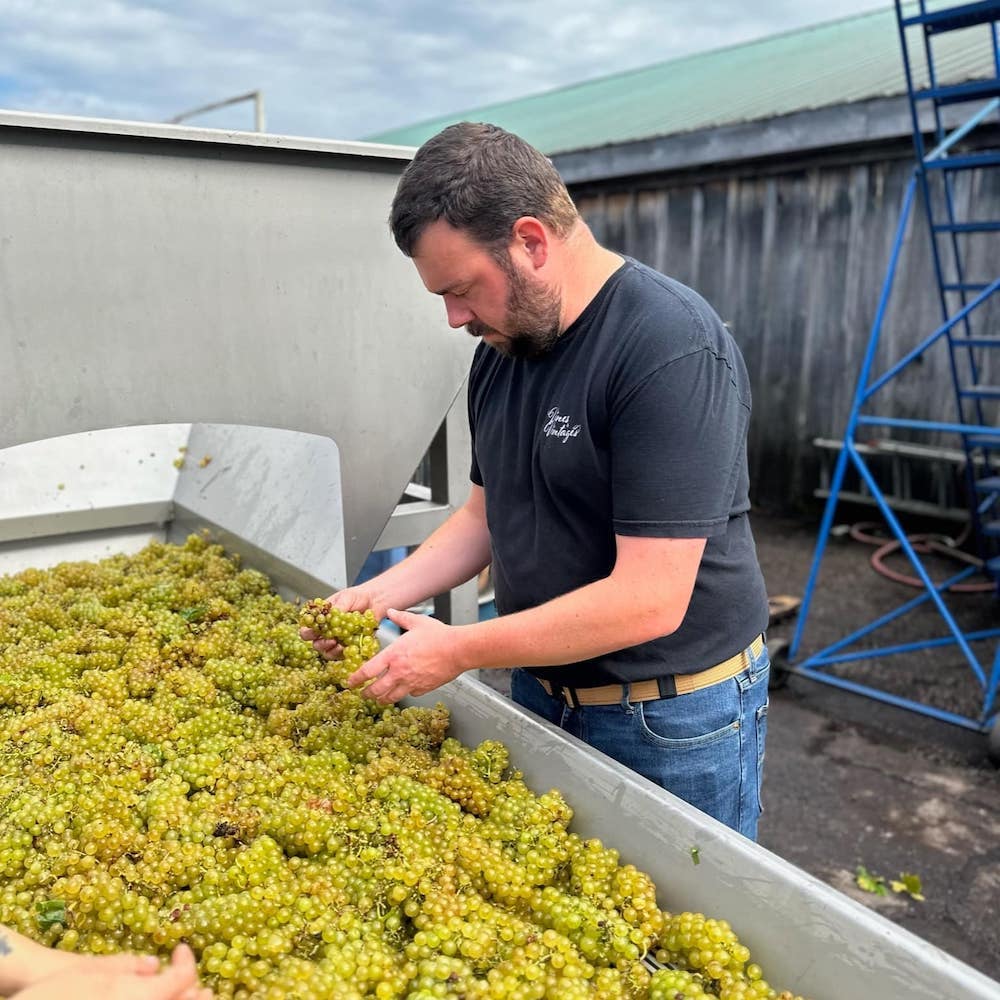
Bondett is right, of course, but conveying that to consumers is the hard part. Speaking the language of Riesling is incredibly complicated. It requires a translator, or perhaps a nuclear physicist, to fully explain what is inside that bottle you about to buy. It’s simple to say a fruit-driven Riesling at a low 9% abv indicates medium-sweetness, while a Riesling with 13% abv would still demonstrate the same fruit characteristics but would be closer to dry. But you can’t expect consumers to do that math while buying a nice bottle of wine simply to go with tonight’s dinner. Adopting a scale of some sort for the back label that would be widely used by Ontario wineries is just unrealistic, it will take years of convincing everyone to get on board with either a German wine scale or the Alsace IRF referenced above by Bondett.
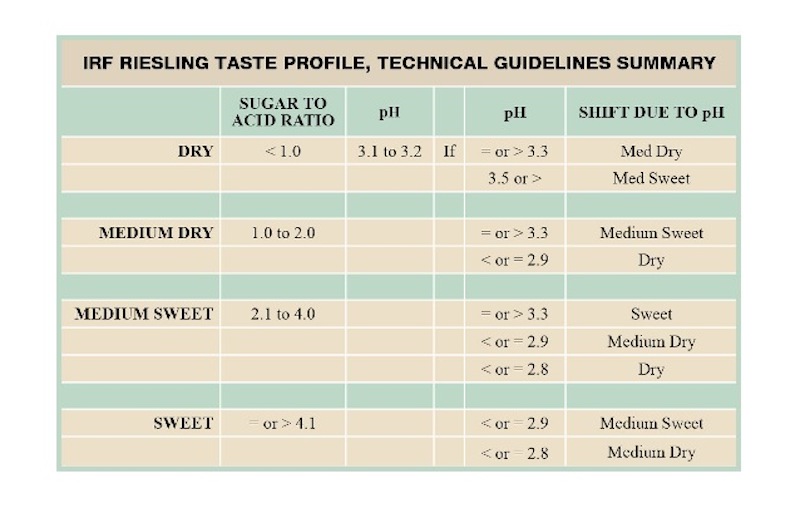
The German scale for Qualitätswein Rieslings goes like this, but doesn’t account for acidity, which is crucial in Niagara:
• Trocken – a dry wine (less than 9 g/l of residual sugar)
• Halbtrocken – off-dry to medium-sweet (up to 12 g/l of residual sugar)
• Lieblice – a sweet wine (up to 45 g/l of residual sugar)
• Süss – a sweet wine (more than 45 g/l of residual sugar)
This is what wine writer Lidija Biro was referencing with her comment on the Riesling post a couple of weeks ago: “I love Ontario Riesling and understand the argument that a little RS balances the high acidity of the grape variety. But my palate rebels at even small amounts of RS (e.g., 6-9 g/L), so please make it dry,” she wrote. I would argue that even the most ardent lover of dry Rieslings would balk at a wine with 9 g/l of RS and relatively high 13% abv; it’s simply unbalanced, or at the very least, perceived to be bracingly dry on the palate because of the elevated levels of acidity. The math is tricky when dealing with Rieslings made in Ontario.
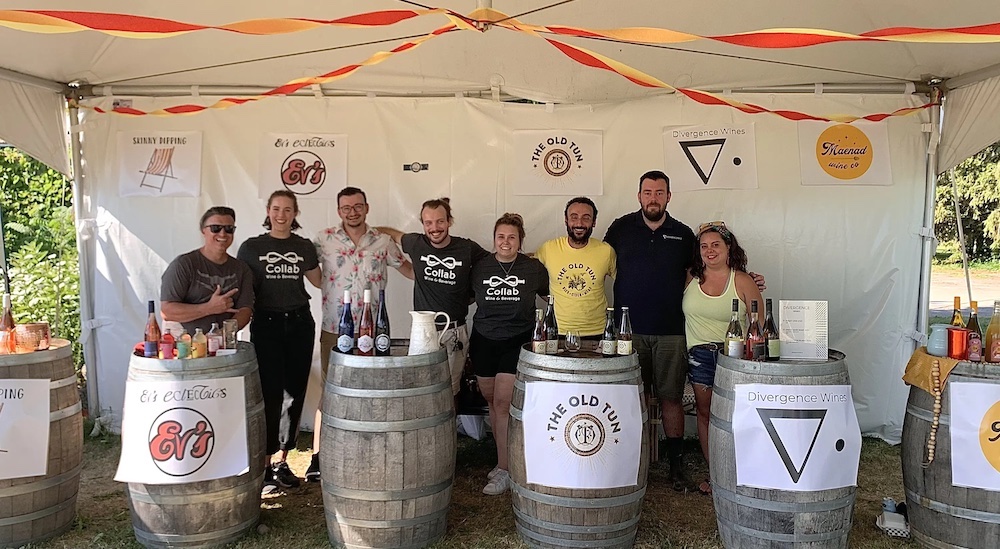
I jumped at the chance when the winemakers at Collab Wine and Beverage (shown above), a collection of virtual beverage brands focused on showcasing unique, small-batch brands in Ontario, reached out to Wines in Niagara following the last Riesling post to come taste a range of wines that run the gamut of styles for this misunderstood variety. I came away with the feeling that Riesling has a very bright future in the hands of this younger generation of winemakers who are passionate about raising the bar on this variety. Although their styles vary from brand to brand, each expression has a purpose and a reason behind why they chose one style over another. It was a fascinating tasting and discussion.
Based in Niagara-on-the-Lake, Collab is a place for industry professionals to come together to create and grow their own distinct virtual beverage brands. The wines are made at Marynissen winery by several winemakers all under the Collab umbrella, including 80X Wine Company, Divergence Wines, Ev’s Eclectics, Fogolar Wines, Kaj Bevy, Liebling Wines, Maenad Wine Company, Skinny Dipping and The Old Tun.
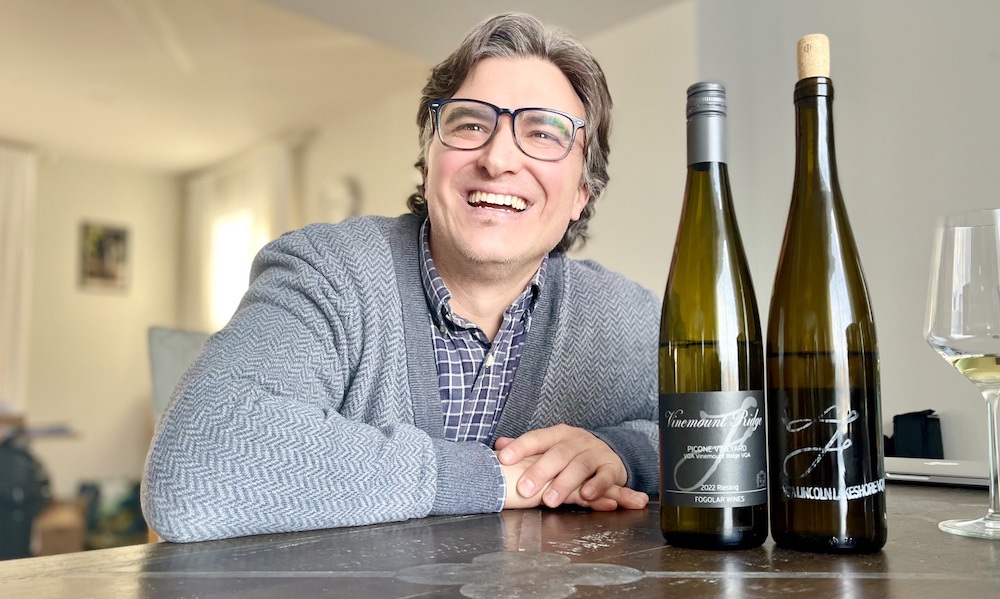
I met with Marc Pistor (above), the head consultant for Collab who has been making wine professionally since 2005 and owns the brand Fogolar, Jeff Moote, founder and owner of Divergence Wines, and Mitchell McCurdy, the winemaker at Marynissen and owner of Ev’s Eclectics. They are the key cogs in the Collab group while all are juggling various other jobs in the industry. One thing they have in common is their love for Riesling, and that was on full display as we gathered at the original Marynissen farmhouse to taste a range of Rieslings as well as a couple other wines, including a delicious Chardonnay from another Collab venture, Maenad Wine Co., owned by Yvonne Irvine, who is also a winemaker at Creekside and Queenston Mile wineries.
We tasted a range of Rieslings (and a couple of other wines) with different viewpoints and styles that each winemaker feels expresses this grape in its purest form from the terroir in which it is grown. Reviews are in the order we tasted them. All wines are available at Collab Wine and Beverage (https://drinkcollab.ca/) or coming soon as noted.
Divergence Wines
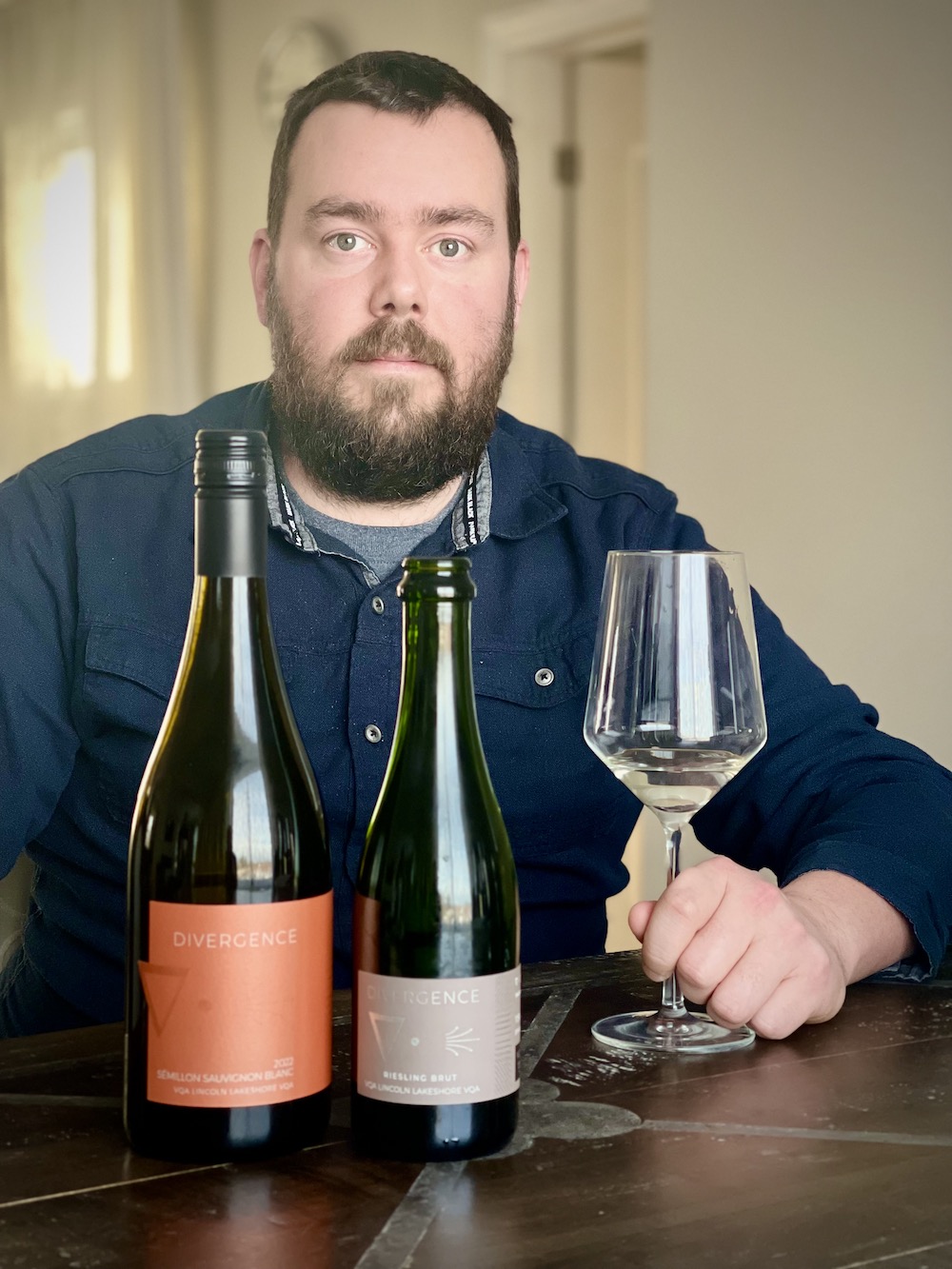
Divergence is a passion project from Moote, who worked at Fielding, Creekside, and Trius before joining the Collab team and launching Divergence.
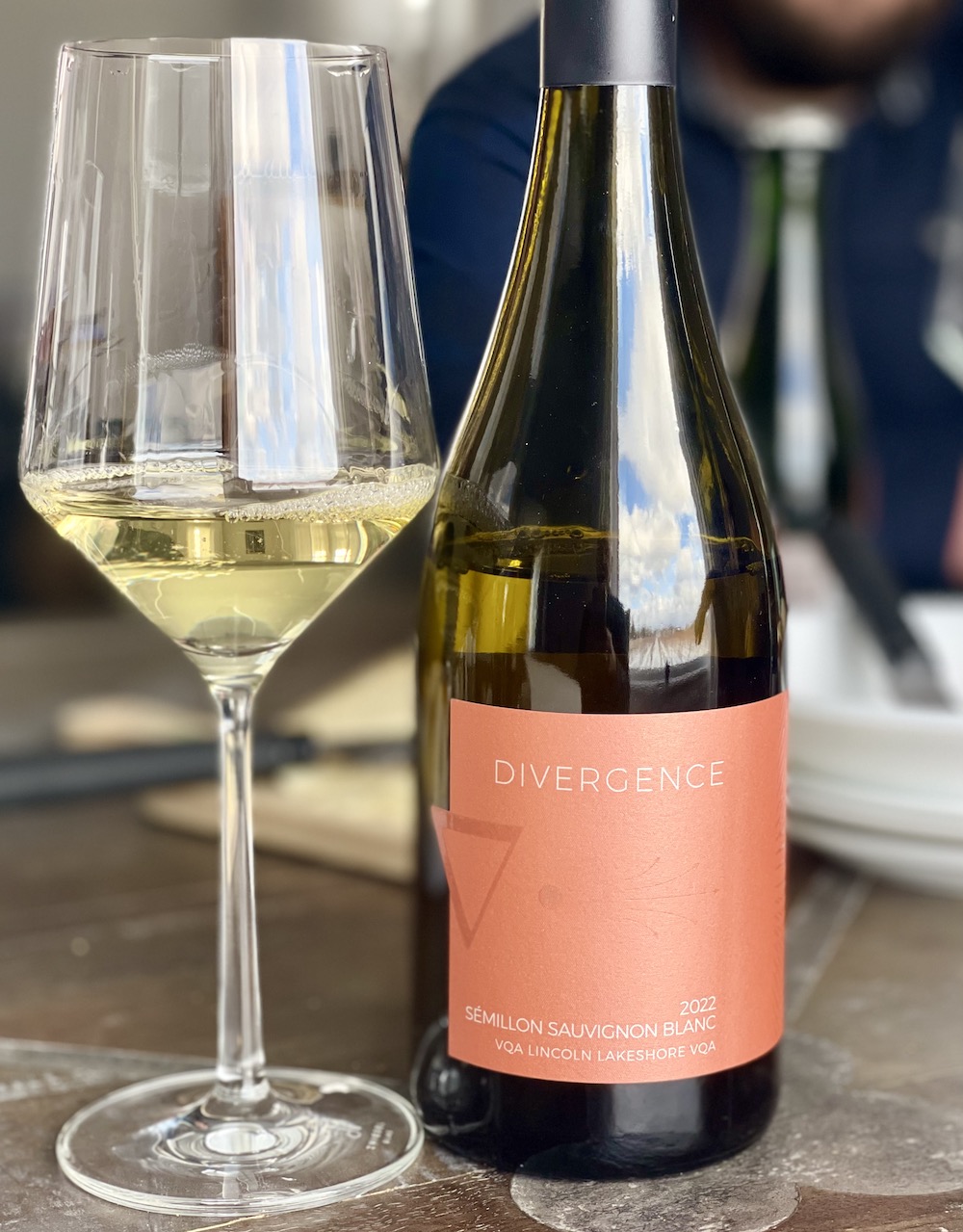
Divergence Sémillon Sauvignon Blanc 2022 ($35, 92 points) — The blend is 53% Sémillon from the Lizak Vineyard and 47% Sauvignon Blanc from Hughes Vineyard that was barrel fermented and aged in used barriques for nine months. It has a fresh, open knit nose of lilacs, wild honey, pear, grapefruit, bergamot, light herbs, and integrated spice notes. It has a fleshy texture on the palate with rich notes of pear, yellow apples, juicy citrus, barrel spice notes, subtle herbaceous accents, and a fresh, vibrant finish.
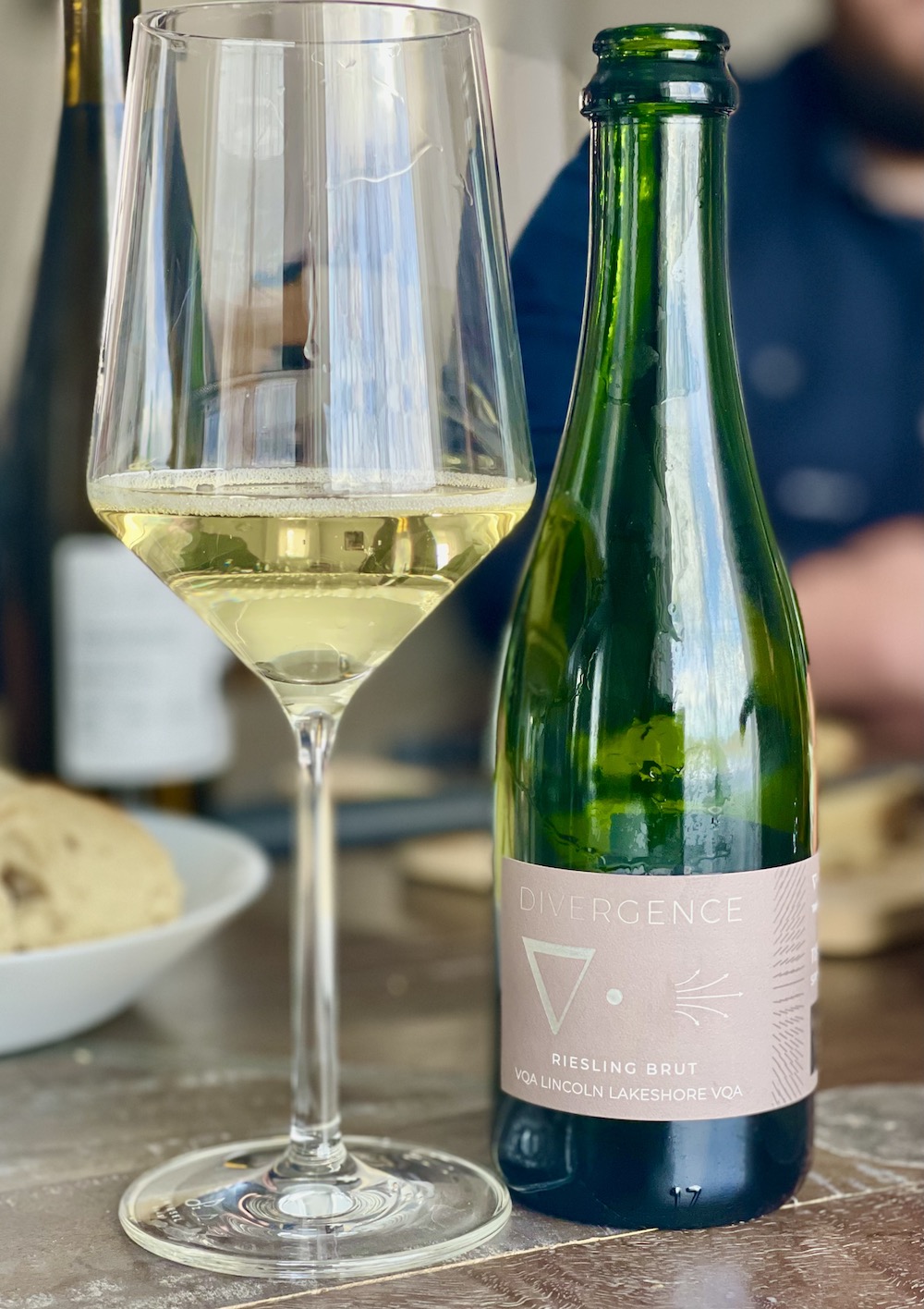
Divergence Riesling Brut 2021 ($20 for 375 mL, 91 points) — This convenient, half bottle of traditionally made, 100% Riesling presented with a crown cap was aged on its lees for 12 months. The grapes were hand-picked from the Hughes Vineyard and a dosage of 9 g/l from the same Riesling was applied. It has a lovely mineral/saline nose with pure Meyer lemon, lime, green apple, white peach with a vigorous bubble in the glass. It’s bright and bubbly on the palate with lime, stony/chalky notes, green apple, lemon zest, peach skin, and a lively finish.
Fogolar Wines
Fogolar is a project from Pistor, who has trained alongside some of Ontario’s best winemakers. Fogolar is focused on elevating the reputation of Ontario wines in the eyes of consumers. While he enjoys working with other varieties, Pistor chooses to focus Fogolar’s portfolio of Riesling and Cabernet Franc, two varieties that he feels best showcases the unique terroir of the region.
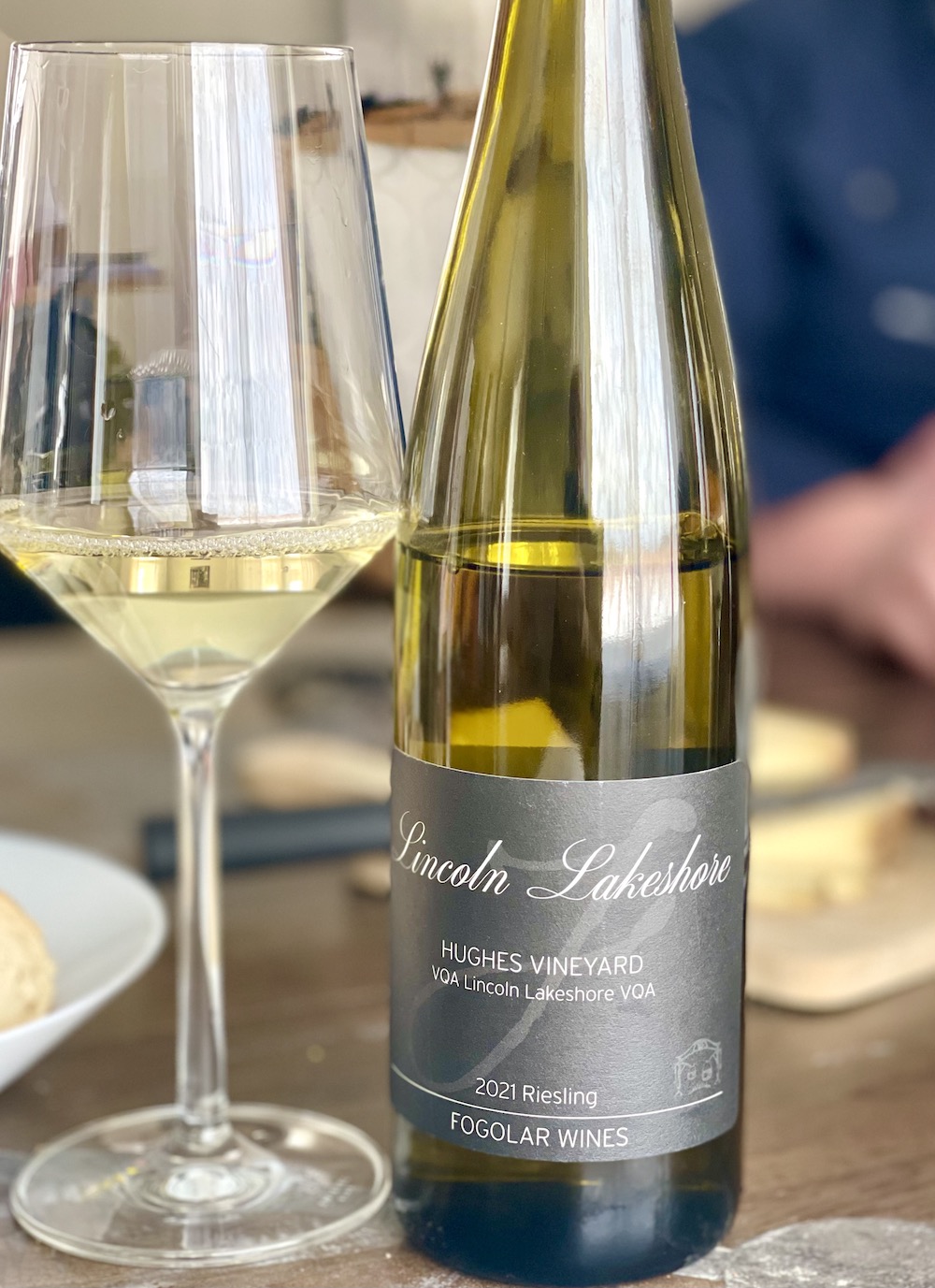
Fogolar Wines Hughes Vineyard Riesling 2021 ($25, 92 points) — While the labels for Fogolar focus on the sub-appellation first, then the specific vineyard and finally the producer, consumers will see a big change beginning with the 2023 labels that will feature a vineyard first approach, followed by sub-app and producer, much like what Thomas Bachelder is doing with his single-vineyard Bachelder wines and what Burgundy has always done. It’s a bold move and pushing the envelope, but not breaking any VQA labeling rules, however I would be surprised if the regulator isn’t watching this carefully. For Pistor, he says, “it’s easier to talk about the vineyard then to talk about the sub-appellation.” As for his Riesling-dominant portfolio, Pistor prefers a balanced approach for the single-vineyard wines by using arrested fermentation to achieve 9% (or so) abv and 30 g/l of RS. He says the high acidity with this system “achieves a balance in Riesling I really, really like. You can have high sugars with low alcohol and high acidity. Ph (acidity) is such a powerful thing for Niagara Rieslings.” The Hughes Vineyard shows a profoundly mineral nose of saline/oyster shells with bergamot, apple, ginger notes, ripe peach, and subtle savoury accents. High brix, yes! But beautifully balanced with racy acidity that amplifies lime, grapefruit, lemon, peach, stony minerality, subtle petrol, lovely ginger and a mouth-watering, lifted finish. Can cellar 7+ years.

Fogolar Wines Grimsby Hillside Vineyard 2021 ($28, spring release, 93 points) — Winemakers are increasingly gravitating to this unique vineyard on the western frontier of Niagara, technically in the Lincoln Lakeshore sub-appellation but proving worthy of its own its distinct status. It’s made similarly to the Riesling above with arrested fermentation resulting in 8.5 abv and 30 g/l of RS. It’s more perfumed and floral on the nose than the wine about with ethereal notes of lime cordial, apricot, peach pulp, fresh apple, wet stones and saline, with a pinch of ginger. It’s rich, layered, textured, and honeyed on the palate with deep notes of peach tart, ripe apple, lime, ginger and stony minerality with racy acidity and a long, echoing finish. Can cellar 10+ years.
![]()
Fogolar Picone Vineyard 2022 ($25, spring release, 94 points) — Pistor’s first vintage of Riesling was in 2014 sourced from the tiny Picone Vineyard in the Vinemount Ridge sub-appellation made famous by the Charles Baker CB Riesling project. It acts more like a Twenty Mile Bench wine than the sprawling Vinemount Ridge sub-app, which needs serious of rethinking, in my opinion. Making of this wine follows in line with the others above at 10% abv and slightly lower 23 g/l of RS. The fruit is hand-picked and whole cluster pressed. It’s quite interesting and different on the nose with subtle reductive notes and savoury/salty notes followed by sweet peach, lanolin, bergamot, quince, and apricot. It’s fleshy and rich on the palate with exotic flavours of pure lime, mulled peach and lemon pith, apricot tart, and brown honey that’s all impeccably balanced through a long finish. Can cellar 10+ years.
Marynissen Estates
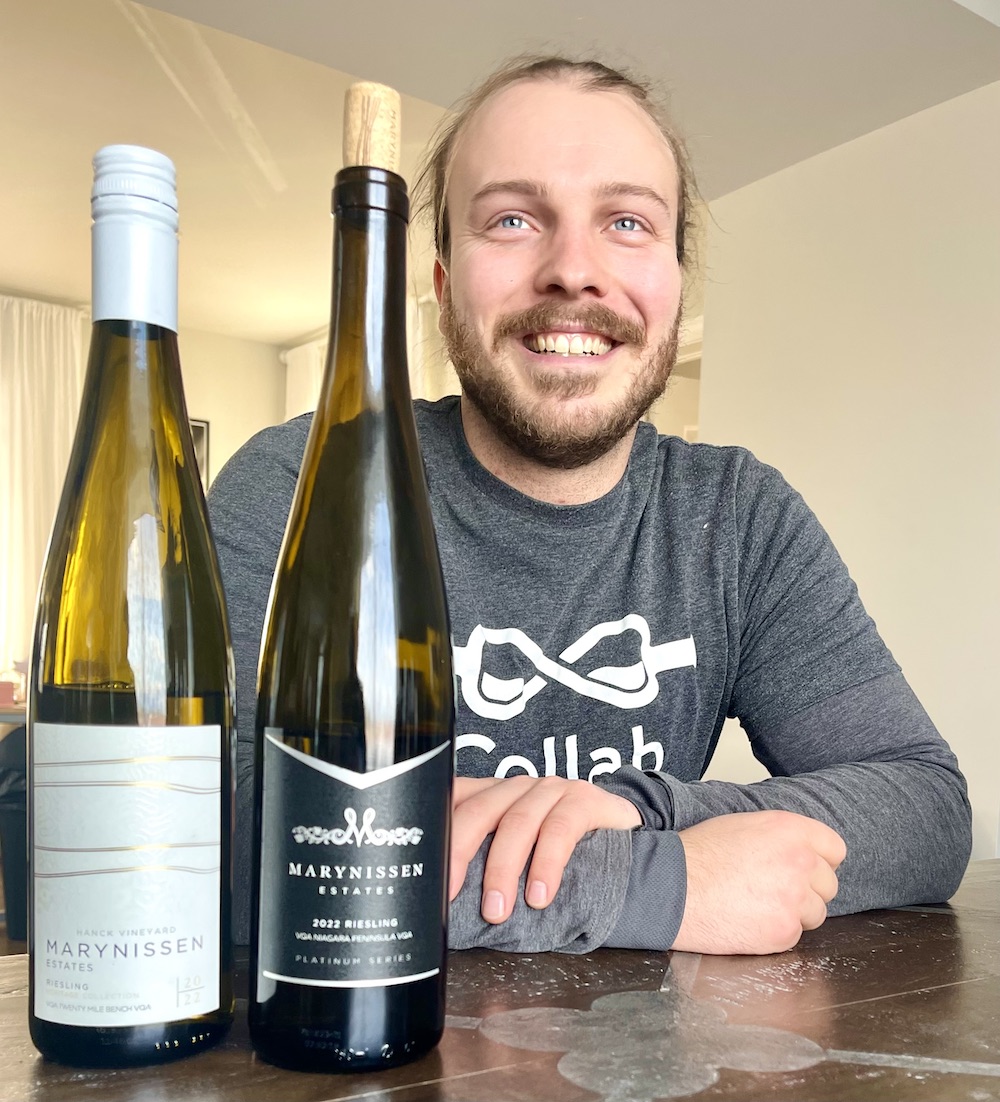
As one of Niagara’s first commercial wineries, having opened in 1990, Marynissen has deep roots in our Canadian winemaking industry. It is home to Canada’s oldest planting of Cabernet Sauvignon vines that date back to 1978. Under new owners, Pistor was brought on as a winemaking consultant, soon followed by McCurdy in fall of 2018 and named winemaker the following year. With the day-to-day operations now being managed by Collab, both businesses are now able to grow together.
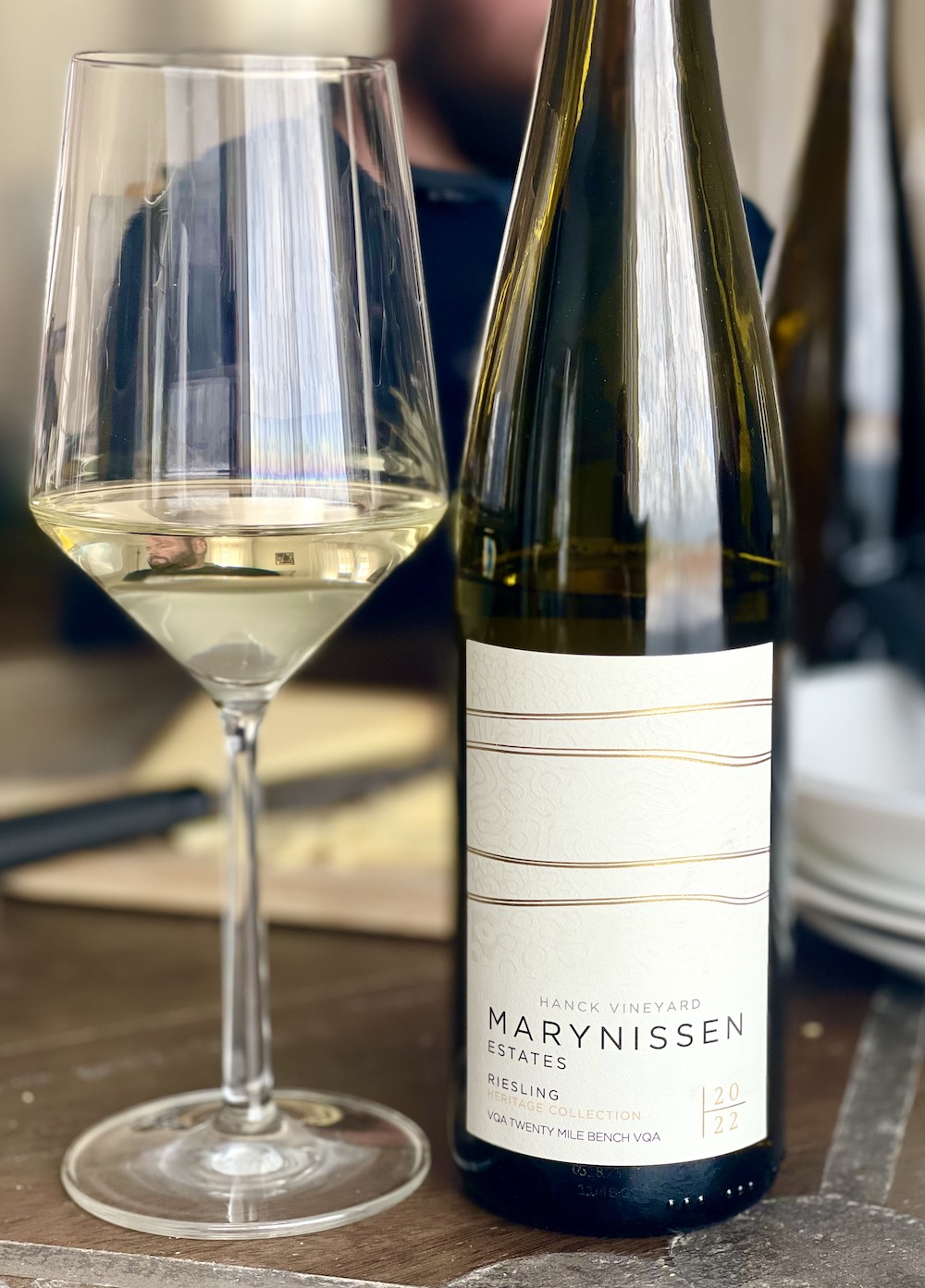
Marynissen Heritage Collection Hanck Vineyard Riesling 2022 ($23, 90 points) — Another Riesling crafted with low alcohol and high RS (25 g/l) using arrested fermentation, the intentional act of stopping an active fermentation before dryness. The nose is clean and lifted with notes of lime, grapefruit, some ginger spice, apple, peach and stony minerality. There’s honey goodness on the palate, with ripe peach, saline minerality, yellow apple, bergamot and juicy acidity on the finish keeping the sweet notes in balance. Can cellar 5+ years.
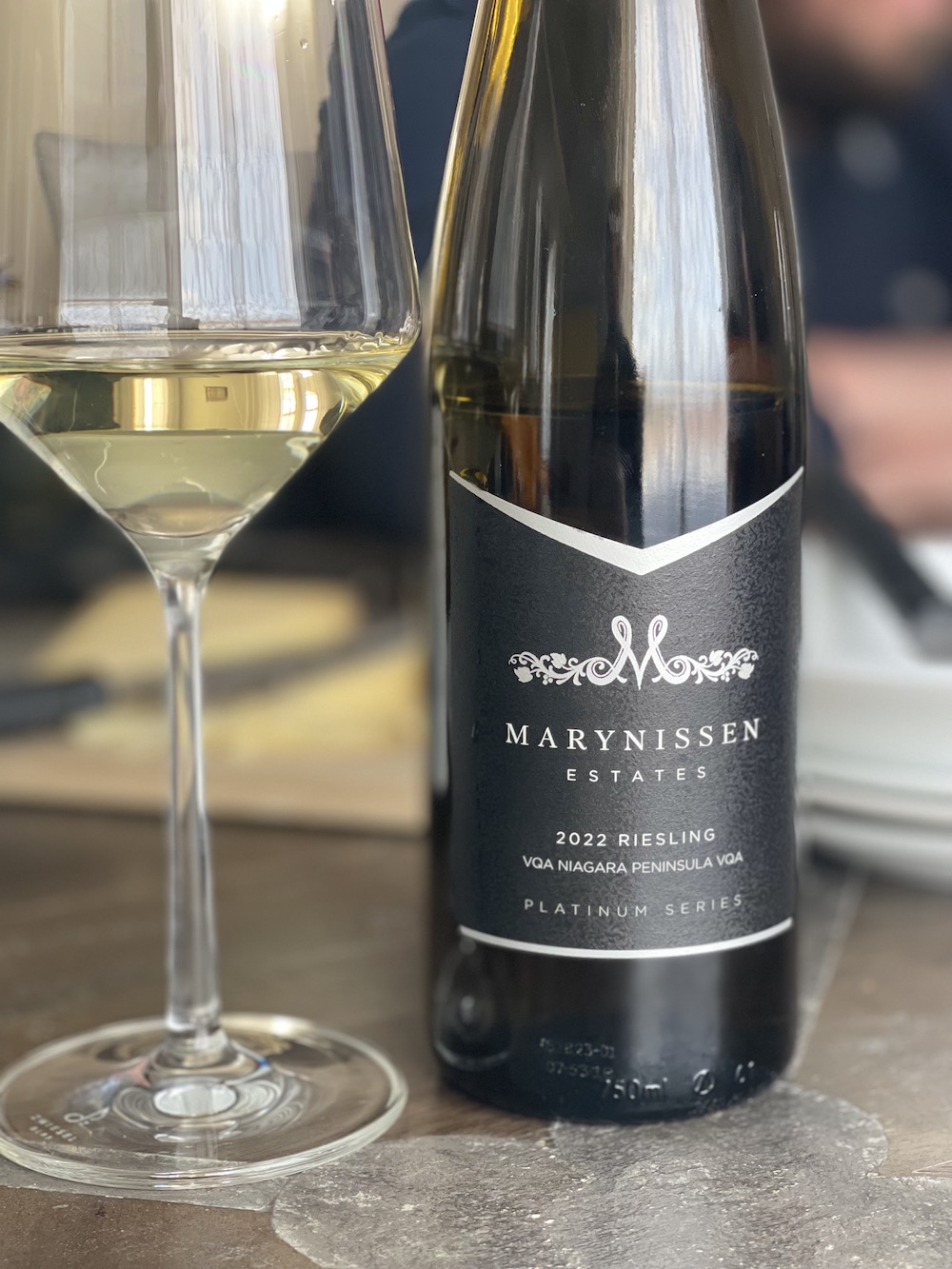
Marynissen Platinum Series Riesling 2022 ($35, 92 points) — The top tier Platinum Riesling is a blend of the best grapes from Picone Vineyard, Marynissen estate fruit, Hanck Vineyard and Grimsby Hillside Vineyard that was picked late and made in a bone-dry style with only 3 g/l of RS. Very different expression here with a lovely saline nose, bergamot, lime sorbet, savoury notes, peach fuzz, subtle white pepper, and crushed seashells. It’s perfectly dry and puckering on the palate with a touch of reduction, flinty notes, lemon-lime, peach skin, fresh pear, and brisk, brash, sizzling acidity on the finish. This will require a bit of aging to soften the acidity and bring more harmony, but you will be rewarded. Try at least a year tucked away in the cellar and it will continue to evolve another 7 years.
One more from Fogolar …
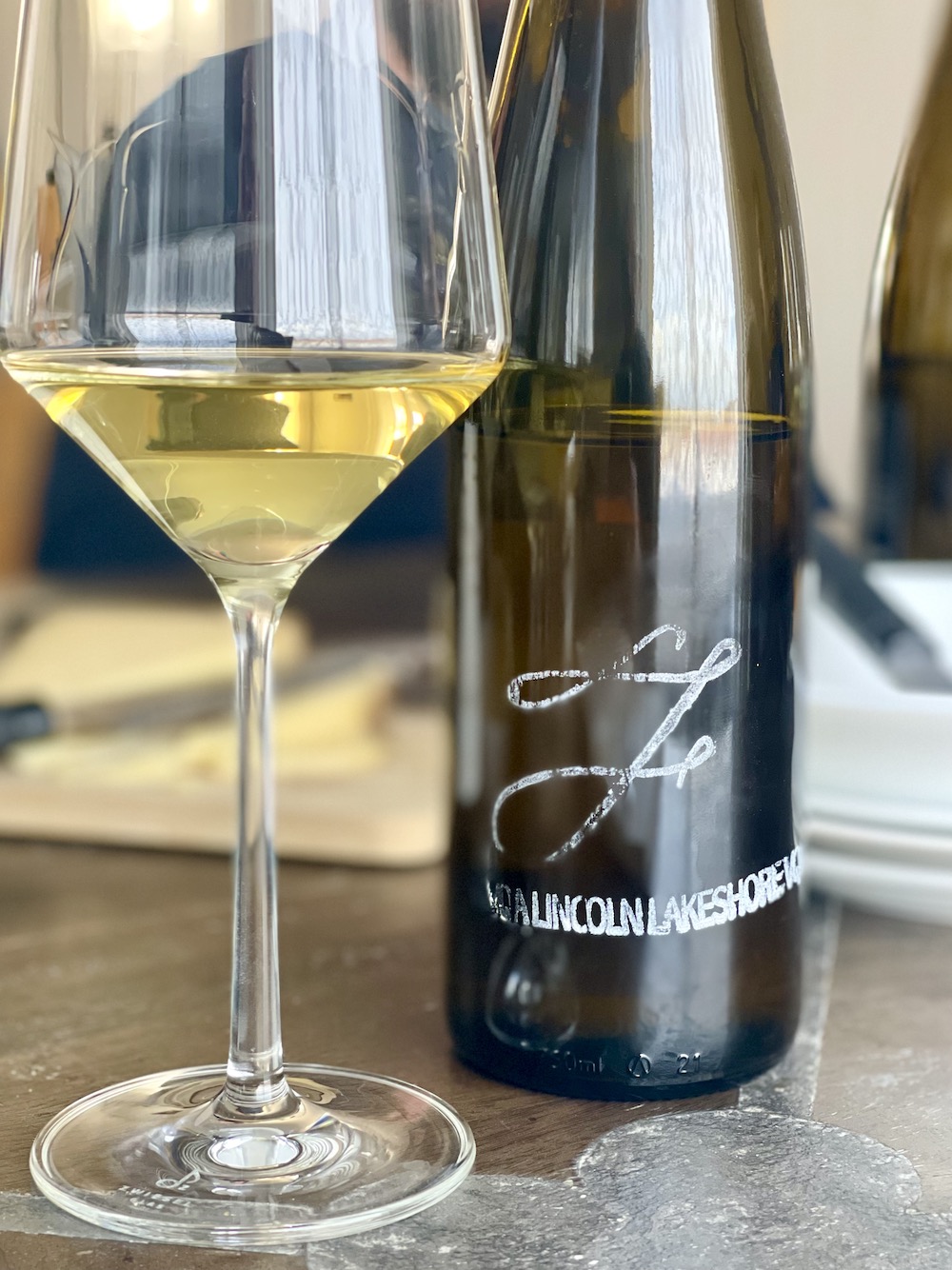
Fogolar Finite X Grimsby Hillside Vineyard Riesling 2022 ($28, not released yet) — It’s far too soon to evaluate this quirky Riesling sourced from the Grimsby Hillside Vineyard and made under the Finite X label, an exploration of minimalist winemaking from what Pistor calls an “exceptional” vineyard. It was finished at nearly 13% abv, so, naturally a drier expression. Half the fruit was fermented and aged in oak for three months and then combined with the unoaked portion. It is unfined, unfiltered and no sulphur was added. The nose is profound with rousing bergamot, beeswax, fennel, ginger, savory/earthy notes, and a touch of spice. This is a wild, untethered Riesling with a flinty/matchstick note on the palate, that unusual fennel note, earthy/savoury accents, ginger, citrus zest, white peach, pear and electric acidity on the finish. I want to get back to this wine in a few months before scoring it.
Maenad Wine Co.
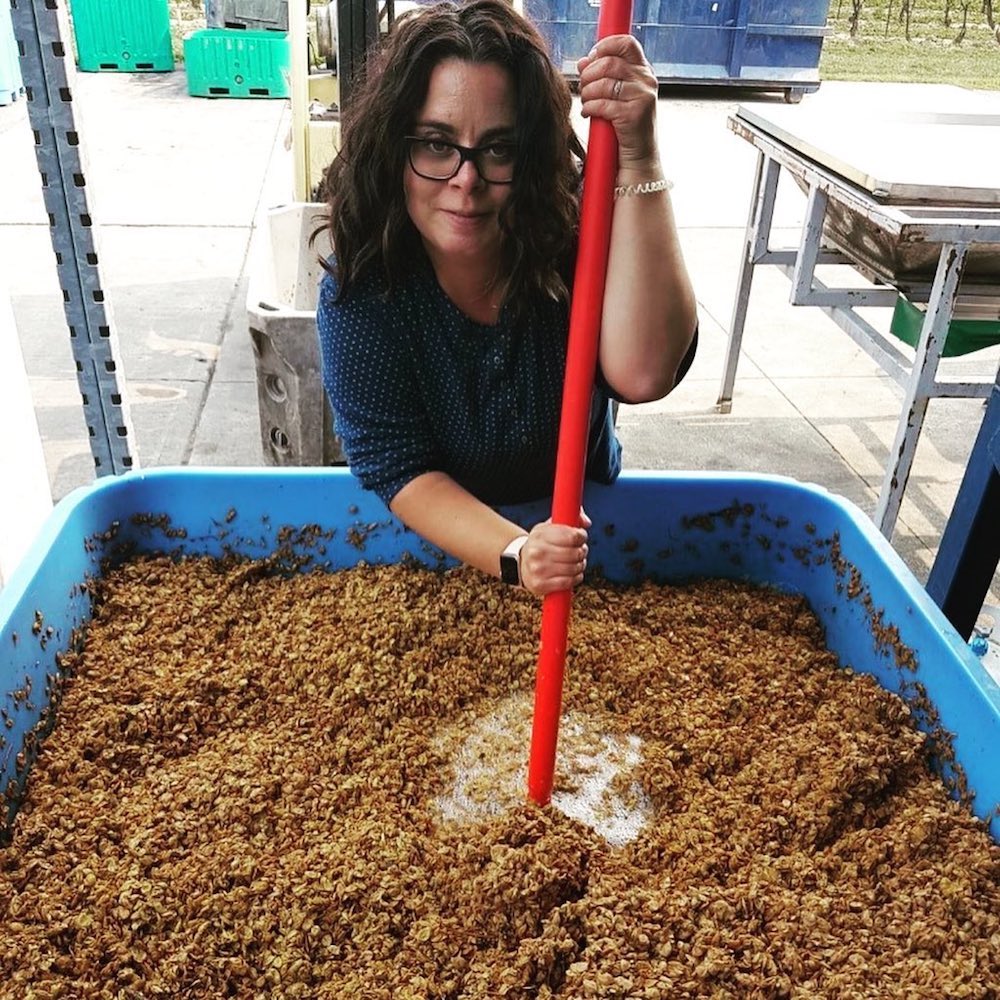
Yvonne Irvine, above, is the winemaker and co-founder, along of Maenad along with her husband Rob Wallace. Irvine’s day job is as the assistant winemaker at Creekside Estate Winery and Queenston Mile Vineyards. After stumbling across the history of these fierce, wild, wine drinking women one night, the notion of creating a brand and lifestyle around them took hold.
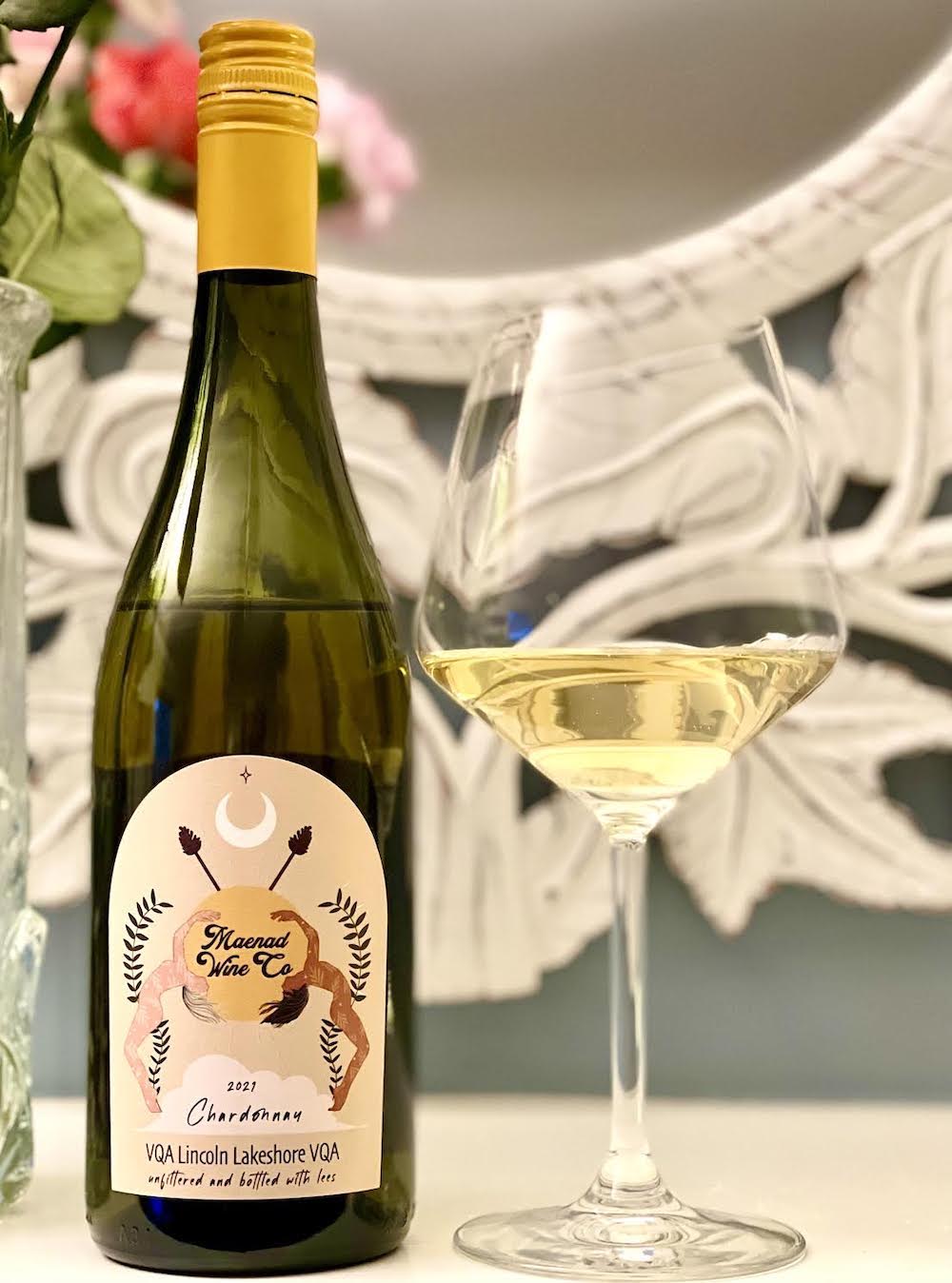
Maenad Wine Co. Chardonnay 2021 ($37, 93 points) — If you are familiar with the Maenad portfolio, you know that the wines push the boundaries of traditional winemaker. Irvine makes a lot of different expressions of pet nats, piquettes, and natural wines that are all unfiltered, unfined and bottled without sulphites. This Chardonnay diverges slightly using grapes sourced from the Grimsby Hillside and whole bunch pressed and fermented with wild yeasts in French oak barrels (new and older oak) where it was aged for 12 months and bottled with a small amount of sulphur before bottling and no filtering or fining. I really do love this Chardonnay, such a vivid and aromatic nose of ripe pear, bergamot, nectarine, fresh apples, stony/saline minerality, lemon zest and well-integrated spice notes. It’s fresh and minerally driven on the palate with juicy orchard fruits, pristine lemon accents, complementary spices and a vibrant, lively finish that makes you want to take another sip. I can’t help but think of Chablis when drinking this. Really nice drop for drinking now and up to 5 years.


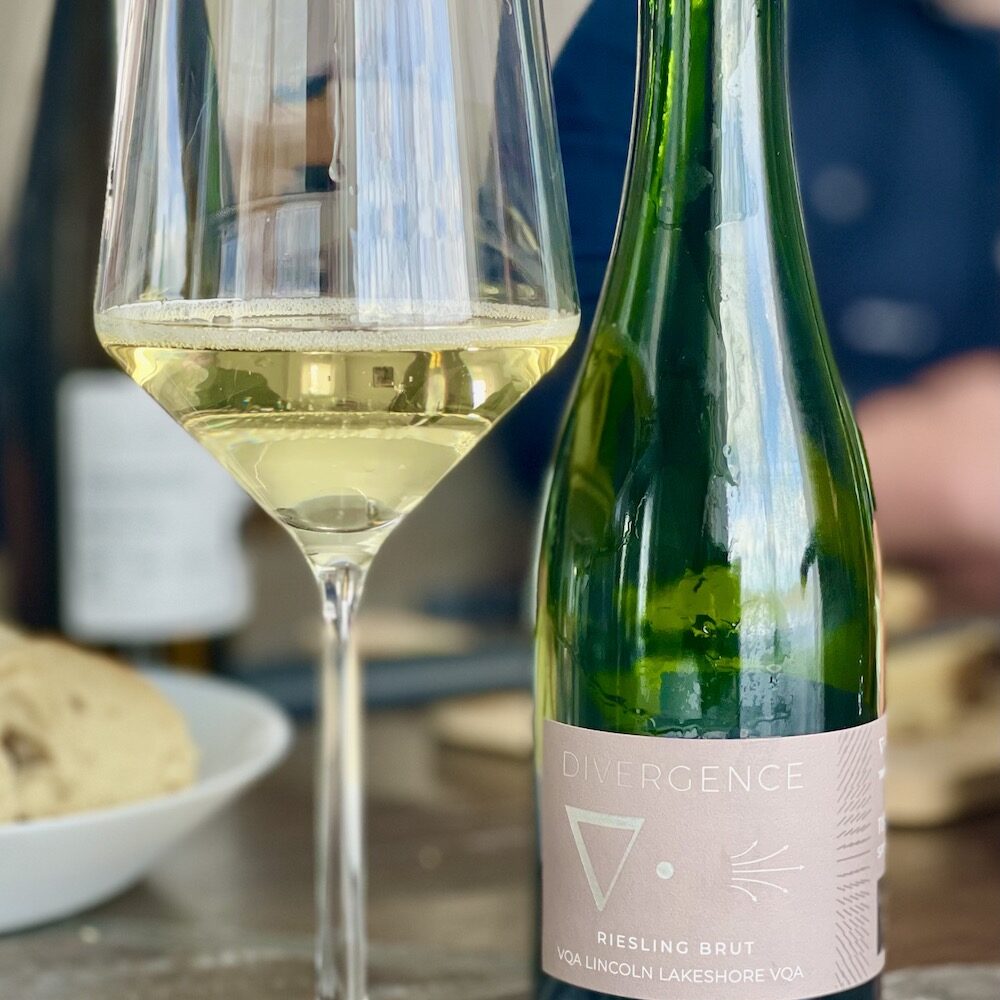




Hi Rick,
Great article helping Riesling lovers and potential to better understand this
In fact in Germany and Austria trocken / Dry does take into account the Acidity.
This has been like this since the 1971 wine laws were introduced. Also when I studied viticulture/oenology in Geisenheim in the mid 1980’s.
See:https://www.austrianwine.com/our-wine/wine-law/residual-sugar-content.
Trocken (dry): up to 4 g/l or up to a maximum of 9 g/l if the total acidity is not lower than 2 g/l below this value.
For example, a wine with 8 g/l of residual sugar requires at least 6 g/l of acidity to be declared as trocken or dry. Or, expressed as a formula: acidity +2 up to a maximum of 9.
Thanks for clarifying, Arthur. Rick
Does RS affect the flavor profile of Riesling?
One of my favorite flavor notes for Riesling is petrol, but I only notice it in some bottles. Especially older bottles of Cave Spring’s own vineyards. Maybe it’s an age thing.
I love the smell of petrol in the morning! And in Riesling. It does present itself more as the wine ages. There are different thoughts on where it comes from, but I know one thing … it is more evident in the stressful vintages, the hot, dry years where the vines struggle for water. Vintages like 2020, 2016, 2012, 2010, 2007, etc.